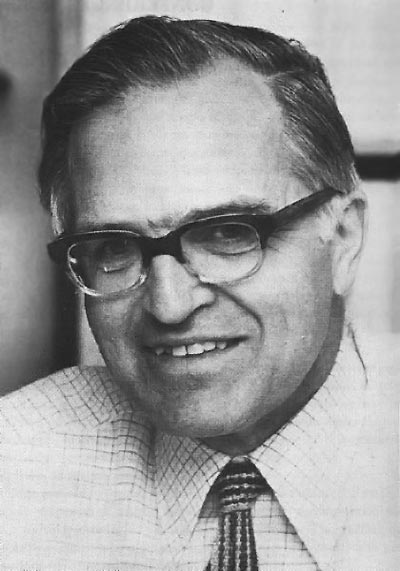
The Danish physicist and Nobel laureate Aage Niels Bohr died on 8 September at the age of 87. The son of quantum-physics pioneer Niels Bohr, Aage himself made critical contributions to the structure of the atom that, following in his father’s footsteps, earned him a share of the Nobel Prize for Physics in 1975.
The fourth son of Niels and Margrethe Bohr, Aage Niels Bohr was born in Copenhagen on 19 June 1922, just months before his father was awarded that year’s Nobel Prize for Physics for his work on atomic structure.
He began his physics degree at the University of Copenhagen in 1940, shortly after the German occupation of Denmark. However, in 1943, due to the Bohrs’ Jewish heritage, Niels Bohr and his family fled Denmark to avoid arrest by the Nazis. After a spell in neighbouring Sweden, the Bohr family continued to England to join the government-operated Department of Scientific and Industrial Research, based in London.
In 1944, Niels and Aage travelled to the US where they both worked on the Manhattan project at Los Alamos. After the war ended, in 1945, the Bohrs returned to Denmark where Aage completed his master’s degree in 1946. He then went to the US to work at the Institute for Advance Study at Princeton University in 1948 and then worked with Isidor Isaac Rabi at Columbia University from 1949 to 1950.
Bohr went back to the University of Copenhagen in 1956, where in 1963 he succeeded his father as head of the Institute of Theoretical Physics. In 1975, Aage Bohr, together with Ben Roy Mottelson of the Nordic Institute of Theoretical Physics (NORDITA) in Copenhagen and Leo James Rainwater of Columbia University, shared the Nobel Prize for Physics for their work on the internal structure of the atomic nucleus.
They combined the liquid-drop model of the nucleus – the picture of the nucleus as an incompressible fluid – and the shell model to produce a “collective model” of the nucleus. Using this model, they showed how individual nucleon orbits can exist in a nucleus with non-spherical, liquid-drop properties. Despite the apparent simplicity of the model, the complex forces between nucleons are still not fully understood today.
In 1975, after he was awarded the Nobel prize, Bohr became director of NORDITA until 1981. A keen pianist who enjoyed classical music, Aage Bohr married Marietta Soffer in 1950 with whom he had two sons and a daughter. After she died in 1978, he married again in 1981 to Bente Meyer Scharff, who survives him. A funeral will take place on Monday.



